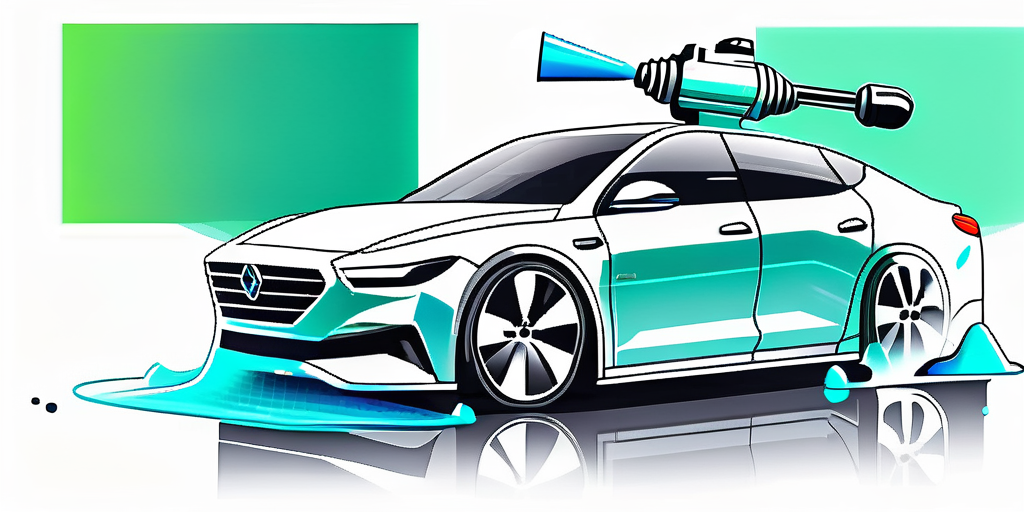What is Spray Coating? Explained by AvalonKing
Spray coating is a technique used in various industries, including automotive, to apply a layer of material onto a surface. This process is often used in the application of ceramic coatings, offering a range of benefits such as increased durability, improved appearance, and enhanced resistance to environmental factors. AvalonKing, a leading provider of ceramic coating solutions, uses spray coating techniques to deliver high-quality results.
The process of spray coating involves the use of a spray gun or aerosol can to evenly distribute the coating material onto the surface. This method allows for a uniform application, ensuring that all areas of the surface receive an equal amount of coating. It also allows for a high level of control, enabling the applicator to adjust the thickness of the coating as needed.
Understanding Spray Coating
Spray coating is a versatile application method that can be used with a variety of materials, including ceramics, metals, and plastics. The process begins with the preparation of the surface, which may involve cleaning, sanding, or priming to ensure that the coating adheres properly. The coating material is then loaded into the spray gun or aerosol can and applied to the surface in a controlled manner.
One of the key advantages of spray coating is its ability to cover large areas quickly and efficiently. This makes it an ideal choice for projects that require a fast turnaround time. Additionally, spray coating can be used to apply coatings of varying thicknesses, allowing for a high degree of customization based on the specific needs of the project.
Types of Spray Coating
There are several types of spray coating techniques, each with its own set of advantages and disadvantages. The most common types include air spray, airless spray, electrostatic spray, and HVLP (High Volume Low Pressure) spray. The choice of technique depends on the specific requirements of the project, including the type of coating material, the size and shape of the surface, and the desired finish.
Air spray, for example, uses compressed air to atomize the coating material and propel it onto the surface. This technique provides a high level of control and precision, making it suitable for detailed work. However, it can be less efficient than other methods, as a significant amount of the coating material can be lost to overspray.
Role of Spray Coating in Ceramic Coating
Spray coating plays a crucial role in the application of ceramic coatings. Ceramic coatings, which are made from nano-ceramic particles, are known for their exceptional hardness and durability. They provide a protective layer that shields the surface from damage caused by UV rays, chemical stains, and scratches. However, these coatings must be applied correctly to achieve their full potential, and spray coating is often the method of choice.
When applying a ceramic coating using a spray coating technique, the coating material is atomized into tiny droplets that evenly cover the surface. This ensures a uniform layer of protection that can withstand the elements and maintain its appearance over time. Additionally, the spray coating process allows for the application of multiple layers of ceramic coating, further enhancing the level of protection.
The Process of Spray Coating
The process of spray coating involves several steps, each of which plays a crucial role in ensuring a successful application. The first step is surface preparation, which involves cleaning the surface to remove any dirt, grease, or other contaminants that could interfere with the adhesion of the coating. This may involve the use of cleaning solutions, abrasives, or other methods depending on the nature of the surface and the type of contaminants present.
Once the surface is clean and dry, the coating material is prepared. This may involve mixing the material to the correct consistency, loading it into the spray gun or aerosol can, and adjusting the settings on the equipment to achieve the desired spray pattern and coating thickness. The coating is then applied to the surface in a controlled manner, ensuring an even distribution of material.
Post-Application Process
After the coating has been applied, it must be allowed to dry and cure. The drying process involves the evaporation of any solvents or carriers in the coating material, leaving behind a solid layer of coating on the surface. The curing process, which may involve the application of heat or UV light, causes the coating to harden and bond to the surface, providing a durable and long-lasting finish.
The final step in the spray coating process is inspection and quality control. This involves checking the coating for any defects, such as runs, sags, or uneven areas, and correcting them as needed. The coating may also be tested for hardness, adhesion, and other properties to ensure that it meets the required standards.
Benefits of Spray Coating
Spray coating offers a number of benefits, making it a popular choice for a wide range of applications. One of the key benefits is its versatility. Spray coating can be used with a variety of materials and on a wide range of surfaces, making it suitable for a broad spectrum of projects. Whether you're applying a ceramic coating to a car, a protective coating to a piece of machinery, or a decorative coating to a piece of furniture, spray coating can deliver excellent results.
Another major benefit of spray coating is its efficiency. The process allows for a fast and even application of the coating material, covering large areas in a short amount of time. This can significantly reduce the time and labor involved in the coating process, leading to cost savings and increased productivity.
Environmental Benefits
Spray coating also offers environmental benefits. Many spray coating techniques, such as HVLP and electrostatic spray, are designed to minimize overspray and waste. This not only reduces the amount of coating material needed, but also reduces the amount of volatile organic compounds (VOCs) released into the atmosphere. Furthermore, many coating materials used in spray coating are low-VOC or VOC-free, making them a more environmentally friendly choice.
Additionally, the use of ceramic coatings can contribute to sustainability efforts. Ceramic coatings provide a long-lasting protective layer that can extend the lifespan of the coated object, reducing the need for replacement and waste. They also offer energy-saving benefits, as they can help to reflect heat and reduce energy consumption in certain applications.
Challenges and Solutions in Spray Coating
While spray coating offers many benefits, it also presents certain challenges. One of the main challenges is controlling the application process to ensure a uniform and defect-free coating. This requires a high level of skill and experience, as well as the right equipment and settings. In addition, certain types of coating materials can be difficult to apply using spray coating techniques, requiring special handling or equipment.

However, these challenges can be overcome with the right approach. For example, training and practice can help applicators develop the skills and knowledge needed to achieve a high-quality finish. Using the right equipment and settings can also make a big difference, as can choosing the right type of spray coating technique for the job. Furthermore, advances in coating technology are continually improving the performance and ease of application of coating materials, making spray coating an increasingly effective and efficient option.
Health and Safety Considerations
Another important consideration in spray coating is health and safety. The process involves the use of chemicals and equipment that can pose risks if not handled correctly. For example, exposure to certain coating materials can cause health problems, while improper use of equipment can lead to accidents. Therefore, it's important to follow safety guidelines and use appropriate personal protective equipment (PPE) when performing spray coating.
Fortunately, many safety measures can be easily implemented. These include using low-VOC or VOC-free coating materials, ensuring proper ventilation, using appropriate PPE, and following safe work practices. Regular training and education can also help to raise awareness of health and safety issues and promote safe practices in the workplace.
Conclusion
Spray coating is a versatile and efficient method of applying coatings, offering a range of benefits for a wide variety of applications. Whether you're looking to protect a surface, enhance its appearance, or extend its lifespan, spray coating can provide an effective solution. With the right approach and the right materials, you can achieve a high-quality, durable, and environmentally friendly finish.
As a leader in the field, AvalonKing is committed to providing high-quality ceramic coating solutions using spray coating techniques. We understand the importance of a well-executed spray coating process and strive to deliver the best possible results for our customers. Whether you're a professional applicator or a DIY enthusiast, we're here to help you achieve your coating goals.
Ready to elevate your vehicle's protection and shine? Explore AvalonKing's premium selection of car care essentials, from advanced ceramic coatings to gentle car shampoos. With years of expertise in providing top-tier products, AvalonKing is your go-to source for all your vehicle cleaning needs. Check out our products today and experience the difference quality can make!










